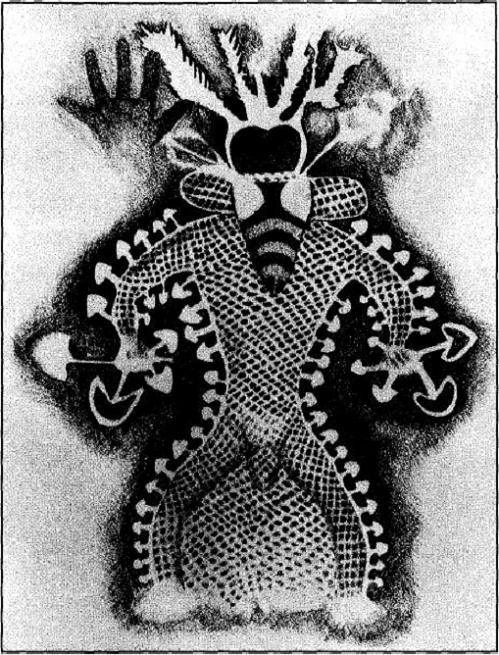 I couldn’t pass up this opportunity to discuss the recent discovery of “prehistoric drug paraphernalia” found in a Caribbean island archaeological site dated to @ 400 BC. Bone tubes and ceramic bowls were found in a human occupation site, suggesting the use of a sniffed substance, most likely cohoba, a hallucinogen made from the beans of a mimosa species.
I couldn’t pass up this opportunity to discuss the recent discovery of “prehistoric drug paraphernalia” found in a Caribbean island archaeological site dated to @ 400 BC. Bone tubes and ceramic bowls were found in a human occupation site, suggesting the use of a sniffed substance, most likely cohoba, a hallucinogen made from the beans of a mimosa species.
“Drug use in the Stoned age!” That’s been the rallying cry of the mainstream media, including this article here, which actually reproduced an image of a early hominid to depict islanders who lived during the same time as the Golden Age of Greece. It’s kind of laughable, but of course the implications for public science education are unsettling.
But I really just want to point out that we have much, much, much earlier evidence for the use of hallucinogens in early human history. I”m actually not sure why these bone tubes are considered so special, since archaeologists have similar dates for bone tubes from the Chavin culture in Peru.
In fact, bone tubes are downright common in pre-contact South America, where they are associated with ritual shamanism (in particular: high status male grave sites that also include incense burners, animal figurines and polished stones).
Here’s a quick sampling of the most convincing evidence for the use of mind-altering substances in human prehistory.
6000 B.C. – Mescal seeds (Sophora secundiflora) have been identified (and dated with carbon14 )in the Pecos River region of Texas. That means paleo-hunters were tuning in and dropping out for millenia before the Caribbeans.
5000 B.C. – Rock art in Algeria (as well as Chad and Libya) clearly depicts mushrooms; in some cases, such as the famous Bee-headed above image, the mushrooms are growing out of human figures.
1500 B.C. The Rig Veda, one of the earliest documents in the Indo-European language group, mentions the mysterious “Soma” in about 10% of the verses. Soma was a god, and an inebriant, and many are still debating which inebriant. Regardless, this is the earliest historical documentation of hallucinogens.
250 B.C. – Effigy bowls (and bone tubes, btw) from the Late Classic period of the Mayan Empire suggest that hallucinogenic enemas were part of elite religious life. Good, clean fun! The use of hallucinogenic mushrooms in Central America is well-known; the cult appears to be related to the ritual use of chocolate. The ancient Aztecs imbibed as well.
That’s just scratching the surface; there are other well-established arguments for the use of hallucinogenic drugs in Ancient Egypt, Mesopotamia, and Australia. Also, some of the rock art in the paleolithic caves in Europe (@10,000 B.C.) clearly depict altered states of consciousness. However, I am not convinced that drugs are necessary in this case, and not just because no paraphernalia has been found. Read my article about ancient lucid dreaming practices for more perspective on this, as well as how cognitive anthropology is biased against non-drug-induced altered states.
Congratulations Ryan on a fabulous website!
Re: this blog, as I read it through I wondered whether this is where the concept of “the hollow bone” came from in Shamanic practice – i.e. emptying your mind of all wordly thoughts so that new experiences can enter. Fascinating.
Jo – that’s a tempting idea: bodily metaphors are usually at the root of most of our concepts so “the hollow bone” is something that feels very close to home. thanks for stopping by!
By the way, let me know when you’re looking for more dream research volunteers and I’ll spread the word here.
wow… dream research volunteers.. yes please. sounds like… a dream.